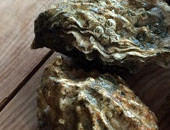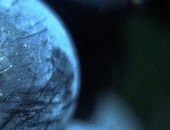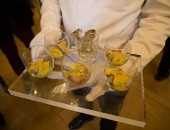The world’s most expensive bottle of wine • new classic vintages • world records
A book entitled The Billionaire’s Vinegar may kindle interest in the wine auction market outside the normal scrutiny from a few affluent wine enthusiasts. It highlights problems inherent at the highest level of authenticating wine although most top wineries have either implemented systems or are working on ways of minimising the risks of fraudulent wines in the future. Unfortunately, they hadn’t even considered this in the 18th century.
Subtitled the mystery of the world’s most expensive bottle of wine the book tells the story behind a bottle of wine which was sold at auction some 25 years ago: 1787 Château Lafite. The bottle sold for just over $156,000 to the magazine publisher Malcolm Forbes, a record then and now for any wine sold at auction. To put this into context a case (12 bottles) of 1961 Petrus recently sold for $102,850 (Sotheby’s Aulden Cellars, 2008). The bottle purported to have belonged to one of the founding fathers of modern America, Thomas Jefferson, a man who travelled the world learning about and enjoying fine wines wherever he went. The bottle had his initials engraved on the glass. What the book doesn’t disclose is why a wine sold for such a price when, apart from its dubious provenance, it would likely be undrinkable. Such was the heat (both literally and metaphorically) in the auction room at the time that the auctioneer, the very individual who had staked his reputation on the validity of the lot, cooled his feet in a bucket of cold water, unseen by the roomful of bidders. No one stood up to gainsay the authenticity of the bottle then even if they doubted it.
Forgers themselves are often more knowledgeable than the experts they fool. Much to everyone’s chagrin they make a mockery of valuers, historians, and connoisseurs. The world of fine wine at this level is rarefied. The man behind many apparently fake old bottles, has also conned most of the major wine critics and commentators at one time or another. The man at the centre of the scandal, seems to have used most of his friends for no other purpose than legitimising his wine collection.
But despite this story and the dent it has undoubtedly left in the reputation of the market as a whole, auction sales over the last year of fine wine have continued to break all records. This amidst worsening economic indicators, fluctuating and depreciating exchange rates particularly for the US dollar and UK pound, and scandals involving fraudulent wine. This inexorable rise in auction prices has put these wines beyond the reach of any except a small number of affluent enthusiasts and collectors. Wine is now an asset like a work of art and it’s far from certain that at this level the buyers in the marketplace really care at all about what’s in the bottle.
A quick look at some of the prices attained over the last year shows the huge value top wines now attain. Six magnums of Château Pétrus 1989, $50,400. Even Champagne is not immune from this fever with 12 bottles of 1990 Louis Roederer Cristal selling for $7,260 nearly twice its estimate. Acker Merrall & Condit achieved a world record auction price for a case of 1990 Domaine de la Romanée-Conti when it sold for HK$1.89 Million (US$242,308) after spirited bidding during their auction sale in Hong Kong in June, 2008 topping a bid last year for an auction record attained for a case (12 bottles) of Domaine de la Romanée-Conti 1990 when it was knocked down to an anonymous bidder for a mere £122,927 at the end of last year. Nor are US wines immune from the excitement: at a sale organised by Sotheby’s in October 2007 a unique vertical of five double magnums of Colgin Tychson Hill, 2000-2004, brought $47,800 selling to a South American private collector. A single bottle of 1941 Inglenook, Cabernet Sauvignon, sold for $11,950: much of the vineyards were purchased by Francis Ford Coppola in the 1970s and it is now named Rubicon Estate. A world record was achieved for one lot of 50 cases of the legendary 1982 Château Mouton Rothschild which was sold by Sotheby’s and Aulden Cellars at the end of last year for $1,051,600 - a record for wine sold at auction. Acker Merrall & Condit also obtained a world record earlier in 2008 when at their sale in Hong Kong a case of 1982 Château Le Pin, fetched HK$822,800 (US$105,487). Cult wines are always of interest particularly in the US where one bottle of 1996 Screaming Eagle Cabernet Sauvignon sold for $15,730 (Acker Merrall & Condit June, 2008). Sotheby’s London sold an extraordinary 70-vintage vertical collection from the famed Château d’Yquem, arguably the world’s greatest sweet wine, to a European private buyer for £368,000.
These prices are, in part, fuelled by new money and collectors coming into the market from the USA, South America and, of course, the new emerging economies of Russia and China. Indeed, at one sale in New York over 40% of the value of the sale ($6 million) was purchased by the top four buyers, all of whom were from Hong Kong. The UK auction market is providing some strong prices because the pound is strong against the dollar, deterring US bidders in UK sales, and making UK prices appear higher. In addition, there is increasing interest from Russia and Eastern Europe, where London is the closest fine wine market to these countries, fuelling prices achieved in the UK. A spokesperson for Sotheby’s said that “there is a lot of interest at the moment due to very high/short-term returns. Prices are robust due to constant global demand and limited supply. Despite its newly-acquired “asset class” status, fashions change and current buzz around wine may well wear off, especially if stock prices improve. Wine has a life span and is for drinking - as a source of inordinate pleasure, you can’t beat it!”
In terms of vintages 1982 is one of the most highly prized in Bordeaux. Will this continue? Sotheby’s thinks so: “once a vintage has a reputation, it rarely loses it. As stocks diminish, so the rarity (and value) increases - viz 1945, 1947, 1961. However, the market is evolving, and new “blockbuster” vintages are coming on-stream, such as 2000 and 2005. 1989 and 1990 are also contenders in this category. Petrus is particularly prized because “it is fantastic quality, is in extremely limited supply, and has a great reputation in Asia. It is the most expensive, therefore in the modern climate, the most desirable.” But what about the much vaunted 2003? Will it catch up with a vintage, say, like 1982. According to Damian Tillson, Deputy Director of Sotheby’s Wine department, 2003s are atypical wines that appeal to those seeking full-on flavour but lack the acidity to age for 20+ years, as illustrated by the 1982s (except for the very top wines). He believes the 2005s will, in time, show up the 2003s as overblown, overpriced wines, although the First Growths are rather good and you can even drink them now. Serena Sutcliffe MW says the “Mouton ’03 is lovely now!”
There is still one essential element to a high price for wine at auction: provenance, which includes how the wine has been kept over its lifetime and that it comes from a reliable source. Vintage too is an important component and the other is the extent of knowledge about the wine in the marketplace. The size of the bottle another: magnums invariably attract higher prices than the bottle equivalent
Fabian Cobb










